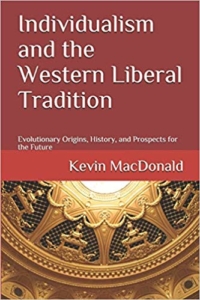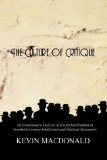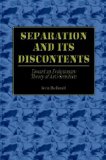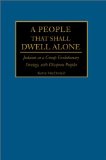A Traditional Catholic Ponders the West and Its History, Part 2 of 2: Review of Individualism and the Western Liberal Tradition
Sometimes the question is more about us and not them — namely, who we are and why are we who we are. Again, I think what drives me in the most elemental way towards an interest in this topic — beyond truth for the sake of truth itself — is my interest in the history and culture of my people. It is, in fact, more than an interest — I am proud of the contribution of Western Civilization; indeed, I do not think any Traditional Catholic could feel differently. The modern gloss — i.e., the Jewish gloss — on Western Civilization and its history is as atrocious as it is mendacious. While we are, just like every other group historically composed of saints and sinners, our culture and history should not be cloaked in shame — our culture and history should be celebrated for their unique contributions to mankind in virtually every conceivable way. When we say something like “Whites” should be celebrated, there is something unsavory about it: perhaps the better way to say it is that Europe, its people, and its civilization are worthy of acclaim. And while my pride in confessing Jesus Christ as the Lord over my life is paramount, I nonetheless take a human pride in belonging to such an august people and rich and unique civilization as that of Europe — in much the same way as a son takes human pride in belonging to virtuous and noble parents. In all of this, I manifestly do not see myself as a supremacist or racist but rather living within the ancient tradition of Patria. Indeed, the great expanse of the Christian message from one end of the world to the other is yet another unique contribution of my people — for whatever reason, God raised us to be the messengers of the Gospel in the age of the Church. Parenthetically, that is another reason why Jewish enmity towards Europe runs as hot as it does. So, while Kevin MacDonald has written extensively on who the Jews are, and why the Jews operate as they do wherever they are, his latest book, Individualism and the Western Liberal Tradition is not particularly concerned with the Jews.
It is a fascinating question to be asked — why did the world tilt in the direction of Europe — her institutions, her languages, her way of thinking, her religion, and her sensibilities — over all other peoples? Why did she dominate, and more to the point, why did she develop as she did? MacDonald would be the first to concede that Europe was not the richest in resources; nor was she populated by the smartest people, but she nonetheless forged something exceptional and impactful — why is that? While MacDonald can be at times a meandering author, on balance, he offers one fascinating take after another on why this is — and he goes way back to begin. Almost all modern historians and cultural authors who reluctantly acknowledge European predominance attribute it to something evil about us or something lucky for us (e.g., Jared Diamond’s Guns, Germs, and Steel). We dominated because we were uniquely bad, or so they hammer our ancestors over and over again. What is refreshing about MacDonald is that he is meeting those critics — really, he is destroying them — but not in a polemical way. Indeed, the corpus of modern history as it pertains to Europe is polemical and designed to insult and demean our history, our fathers, and our civilization. MacDonald does not respond in kind; this is not a work of rousing European Exceptionalism (like, for example, how Guillaume Faye wrote). Instead, MacDonald approaches the question scientifically and antiseptically. Indeed, he approaches more like Spock and is devoid of hyperbole. While I enjoy reading something rousing from time to time, it is energizing all the same to read an account of my people and their history that is tied to a factual predicate and reason and not to emotion.
Individualism and the Western Liberal Tradition is segmented into nine chapters. The first looks at the pre-historic migration of various peoples that coalesced to make the modern European people, their attributes, and cultures. The second reviews the ascendancy of the Indo-European mark of “Aristocratic Individualism.” The third explores the competing European cultural legacy, that of “Egalitarian Individualism.” The entirety of the book rests on the competition between these two European cultural and social paradigms of our people. The fourth explores the unique structure of the European family and the role of women in particular in northwestern European society. The fifth and sixth look at the role of Christianity in the form of medieval Catholicism and Puritanism. For both, MacDonald views Christianity as complimenting and advancing earlier European practices that elevated individualism, monogamy, trust, and moral standing. The seventh looks at the application of European moralism and individualism as it became detached from historic Christianity in the example of the “Second British Empire” and the antislavery movement. The eighth chapter reviews the psychology of moral communities. The final chapter brings us to the modern day with the liberal tradition giving way to a multiculturalist approach that is, in effect, cannibalizing it and destroying Western individualism.
There is much to be said for this book. Indeed, some of it is wonkish and its appeal is limited to people interested in the minutia of population genetics and migrations. But it does highlight several themes that make us and are worth unpacking. It lays bare how we let this (i.e., our destruction) become something we have ended up cheering. Plot spoiler: the irony is that the thing that we are — the thing that ultimately made the world, made us, and is now destroying us — is opposed to what we are accused of being: we built the modern world because we are empathetic and trusting people. While no people are “good” in the sense of a righteous nation or race, we have nothing for which we ought to self-flagellate, especially as compared with any other nations or races. While all men ought to self-flagellate because of their sin and the sins of their fathers, other than being the race through whom God converted much of the world, we have no special reason to condemn ourselves or our fathers.
* * * *
As this is a book about Europeans, MacDonald starts with the pre-historical science of who we are. There is now a consensus that three pre-historic population migrations make up the modern European stock: Western hunter-gathers (WHG); early farmers from Anatolia (EFs); and Indo-Europeans of the Yamnaya culture of Pontic Steppe (I-Es). Modern genetics tells us a lot about the admixture and geography of these peoples in modern Europe: EFs remain the predominant people in Southern Europe and WHG remain the predominant people of Northern Europe. MacDonald argues that the difference between these regions and peoples makes for two distinct genetic clines.
MacDonald addresses the cultural attributes within these peoples who would come to define us. For the I-Es, MacDonald describes what has been called “Aristocratic Individualism.” The I-Es spread far and wide — Europe was not their only conquest and they traveled as far as China and everywhere in between in the known Northern Hemisphere. They were a warlike people who demonstrated favoritism for the proto-meritocratic over strict kinship ties. This is a factor in our legacy that MacDonald hammers over and over again — the essential paradigm for social relations is either kinship based, or not kinship-based. For societies that are kinship-based, trust is invested by blood. For I-Es, reputation and fame became a currency for trust that rivaled blood ties. The warrior culture — and the Mannerbunde way of life — allowed for the cooperation of non-kin in what amounted to roving and fighting fraternal organizational models. I-Es brought with them a hyper-masculine society that allowed for the strongest and most warlike men to ascend in conjunction with their abilities — at least in the domain of warfare. This ethic was one marked by social reciprocity — not blood or despotism. The widespread currency of social reciprocity is one of the key differentiators between us and the rest of the peoples of the world.
The I-E warriors fought like a “band of brothers” for honor and glory. While MacDonald does not fix the free marketplace, as it were, of military advancement as the generator of European individualism, I-Es, when mixed with the EFs and WHGs, built societies that were also more individualistic as opposed to those predicated primarily upon kinship ties. I-E societies were less prone to despotism because men had an expectation of control and freedom over their own lives and political and social arrangements. That freedom is marked in the histories first among the Greeks who exemplified the I-E aristocratic individualist/warrior societies. For MacDonald, the development of these types of societies (as opposed to the predominant worldwide model of kinship primacy) had enormous ramifications. Science itself — a permeable society of intellectual inquiry in which defection is allowable — is an extension of the I-E aristocratic idealism. That said, the Greeks were also relatively ethnocentric in their polis and in world compared to other Western cultures. Two other factors contributed to I-E culture; one, they were exogamous in marriage and procreation — they married among the people they conquered; and two, they were generally monogamous in marriage.
MacDonald believes that the I-E culture and influence are enormous in history even if the aristocratic individualism that has been such a vital part of European history is recessive in modern European peoples today. Their contribution is multifaceted: vigorous, expansive, meritocratic, exogamous, exploratory, inventive and curious. Indeed, when we think of Europe’s audacity — its boldness, its self-assertiveness, its competitive juices, and its greatness — we are seeing the ancient contribution of an I-E culture melded together with the preexisting stock of Europe’s people when the I-Es conquered them.
* * * *
If the I-Es contributed to our history and temperament by giving us our audacity and our love of freedom and prerogative, the WHGs gave us another vital component as well — our “Egalitarian Individualism.” MacDonald notes that WHGs were individualist in orientation as well but in a different strand — whereas I-Es were egalitarian only within their relative peer groups, WHGs were egalitarian without qualification. WHGs too had a culture of reciprocity, which, parenthetically according to MacDonald, the melding between WHG and I-E cultures created an overarching one of reciprocity that is very different from the world model of kinship primacy. MacDonald’s general thesis is that these two strands of egalitarianism — peer-based versus absolute — that make up European culture and people have vacillated in predominance and the soft and “nice” absolute egalitarian individualist culture of European peoples today — i.e., the ones that are committing demographic suicide — is predominant.
WHG culture was less patriarchal — women were empowered to a much greater extent. MacDonald maintains that the reason for this lies in the geographic reality of Northwest Europe: the climate and land, at least at that point, did not permit large, fixed settlements or polygamy that such large, fixed settlements and wealth would provide; they had large complex settlements but they were forced by the ecology to disband them for part of the year. Monogamy is thus another attribute of WHG culture that is critical. The harsh northern environment has an evolutionary impact on who we latter-day Europeans are — simply put, survival in these regions favored the more intelligent, rewarded planning for the future, and paternal provisioning of children. Part of the long-standing development of WHG was that of cooperation — trustworthiness in this migratory setting contributed to our unique psychology.
Another factor important for understanding Western Europe — one that MacDonald will hit again and again — is our exogamy. Much of the world restricts marriage within kinship bounds — cousin marriage is a common worldwide phenomenon that reinforces and strengthens kinship structures. Marriages among WHG were more egalitarian, and, in a sense, presaged the coming Christian religion’s focus on consent. Women were given far more say and direction in whom they married, and that choice proved to be a very strong factor in improving us over time. Personal attraction as the basis of marriage selection changed our complexion and eye color as men and women progressively found lighter-skinned, blue-eyed mates more attractive. Long before the age of chivalry and romanticism, WHGs chose marriage for “love” as much as for any other reason. MacDonald argues that the relative emancipation of women created more nurturing societies as the spouses themselves were more nurturing towards one another and provided a high-investment environment for their children.
MacDonald spends a great deal of time discussing non-kinship marriage patterns for WHGs and subsequent Europeans — especially in Northwestern Europe. Our marriages tended to be monogamous, and marriage occurred later in life, with spouses of similar ages who set up their homes independently from their families. Unmarried individuals were not uncommon. All of these factors favored a more egalitarian matrimonial unit in which the woman was more than a domestic servant and child maker but a true partner in life. It is perhaps one of the great ironies of MacDonald’s work that he lays bare that our women co-created Western Civilization and were the most (comparatively and relatively) emancipated women in the world. Modern feminism, illogical and angry as it is, bemoans the plight of women in our world but never considers the other comparative models in which all of the women elsewhere live.
MacDonald then digresses a bit and discusses WEIRD people — that is modern Western, Educated, Industrialized, Rich, Democratic people based on the work of Joseph Henrich. WEIRD people have attributes that have been etched in time such that — notwithstanding their general trust in diversity and pluralism — makes them different than other peoples. Compared to other peoples, we tend towards altruism, altruistic punishment (that is, punishing “free riders”), and cooperation with non-relatives. We have also internalized a notion of justice that is based upon abstract principles, unlike a kinship-based society that evaluates justice in terms of whether something or another is “good” for the group. WEIRD people are also more inclined to analytical reasoning as opposed to holistic reasoning, and we categorize things independent of function whereas non-Westerners categorize based upon context.
In three chapters, MacDonald addresses the religious changes within Europe (Catholic medieval era, Puritan America, and the British Empire in the nineteenth century). Christianity in both its Catholic and Puritan flavor magnified, per MacDonald, preexisting traits within European stock. Creed, trust, and reputation again trumped kinship and blood. Ideas that stressed a moral community, abstract ideals for which one strives, and the concept of individualism and consent were reinforced. The Church in particular stressed monogamy fanatically and, by doing so, helped make Europe what it would become. Interestingly, the former Catholic MacDonald acknowledges the utter uniqueness of the Catholic Church in its moral suasion and ability to bring powerful and lecherous men to heal at the height of its moral powers. That height was driven by a society that accepted its ideals and was guided by men in the Church who “walked the walk” of the Christian life. The Church lost its battle with Henry the VIII because, by that time, the moral high ground she once possessed had slipped away into the hands of less righteous Christian leaders. In any event, MacDonald lays out something that should be clear — the way back for us is an uncompromising orthodoxy and militant set of ethics. There is no other way for us to reclaim what was lost.
While egalitarianism — whether aristocratic or not — is a predominant feature of the European psyche, ethnocentrism remained a feature as well. Ethnocentrism is more pronounced in kinship-based societies (as opposed to morally based societies) but the typical in-group/out-group mentality remained for us. In some sense, MacDonald argues, the seeming human need to differentiate between “our” people and “other” people — between in- and out-groups — was satiated in Europe by conceiving of the community in moral terms — i.e., where reputation as upholding the moral strictures of the community provides the “social glue” of the society as opposed to kinship relatedness. Both Catholicism in its flourishing medieval model and later Puritanism were explicit moral communities that exerted almost incomprehensible levels of sway, at least from a modern perspective, over the lives of their constituents. When the basis of the moral community changed — and we see that in the transformation of Europeans, at least in part, from Catholicism to Puritanism to post-Christianity — the basis for exclusion, condemnation, and preference were likewise changed. MacDonald’s observation that we ought to see the modern liberal fascism and attempts to control the thoughts and feelings of the broader society as an extension of the Puritanical model of totalitarian control over its members. As an aside, MacDonald sees Jewish influence helping to contribute to this self-hatred of Whites: because of their influence in the media and academia, they have foisted upon us a “culture of critique” in which our moral sentiments of trust and empathy were instrumentalized against our group interests. More can be said of that, but I will leave MacDonald’s critique for now (his thesis was developed and explained in his series of books on the Jews).
We understand modern liberals better if we liken them then to latter-day secular Puritans than if we try to place them within the liberal tradition of individualism and tolerance. MacDonald argues that the development in Western societies of moral universalism and altruism turned European sentiment and practice into something opposed to the perpetuation of the European peoples themselves. In other words — and we see this painfully today — our moralism has been profoundly turned against ourselves. MacDonald classifies this development as both evidencing “pathological altruism” and “dependency disorder”: in essence, we have become, at least the European elites among us, a psychologically extreme version of the “Love/Nurturance” system. We crave social approval (e.g., our need to virtue signal) and we are overly prone to guilt and empathy to the point of self-sacrifice. Women, more than men, are more prone to this psychological extreme because they rate higher on the “Love/Nurturance” system given their role with children. Ironically then, we condemn ourselves for being the worst and least empathetic people when in fact we are the opposite of that.
MacDonald spends some time discussing the cognitive and psychological requirements necessary for Whites to navigate the predominant morally pathological community in which they find themselves. Instinctively and implicitly, Whites tend to want to preserve their way of life and their ethnic community. Explicitly, however, expressions of this type of desire are suppressed by the higher parts of the brain — that is, the explicit type of brain function centered in the prefrontal cortex that controls conscious thought and effort and is able to suppress the more evolutionarily ancient, instinctive parts of the brain — e.g., media messages processed by the higher brain centers are able to suppress ethnocentric impulses. So, for example, psychological experiments that reveal instinctive preferences for one’s ingroup (e.g., race) show that Whites will consciously suppress that instinct in much the same way that a religious person will self-consciously suppress a temptation of the flesh. Truly, our world makes much more sense if we liken the political and cultural battles as one between two religious factions (traditional versus progressive) as opposed to one of religion versus non-religion. MacDonald sees evidence of this in the ways that Whites sort themselves on an instinctive level — White flight, for example, is never an articulable action plan but one tied to an instinct of comfort that works itself out without much thought (and often despite conscious thought).
* * * *
MacDonald’s book is an interdisciplinary account of our people with a focus on our psychological profile that was fused over evolutionary time. To summarize with ultimate brevity, Europeans or Whites developed a civilization that was more individualist because it relied less on kinship as the primary social currency. Our women — ironically when the modern feminist critique is considered — were empowered to a much greater extent than anywhere else in the world. MacDonald goes so far as to suggest — although not explicitly — that allowing our women to choose spouses based upon their assessment of their prospective spouses’ character and fitness improved our collective gene pool. While we see today that White women have eagerly supported feminism, which is an exaggeration of their historic empowerment, we who want our civilization to continue should not be “anti-feminists” as much as we should be rightly ordered feminists. Our political and cultural salvation does not lie in an oppressive patriarchy but in a more naturally ordered spousal relationship. That is one point of the book that took me by surprise and contributed to the way that I see the problem and solution to the collapse of Western Civilization. Misogyny is a lazy response to a pendulum swing of women’s empowerment that has gone off the rails. Our greatness, in reality, lies in our treatment of our women, which Catholicism in particular amplified and nurtured within us.
In any event, MacDonald is not sanguine regarding a renaissance of the European peoples. He does offer some observations about how we might shake off the more extreme elements of what has become pathological self-hatred. First, while we were not particularly ethnocentric, ethnocentrism is a natural human psychological reality. We are programmed on the genetic level to be attracted to people who look like us (as are all people) (i.e., J. Philippe Rushton’s Genetic Similarity Theory). This helps explain why all people to marry another who is closer to them genetically than the general population. He thinks our intense and unhealthy and explicit suppression of White ethnocentrism could be mitigated by a few developments. One is that the pending minority status of Whites in their historic home countries could trigger greater cohesiveness among Whites — a group strategy. In light of becoming a minority, we may consciously resist the explicit suppression of our natural attraction to our own. At the very least, some Whites will begin to question why we are suppressing it. MacDonald says that the explicit anti-White hatred itself may lead to a newly found appreciation among Whites for their own. Anecdotally, as mentioned above, this was a driving factor in my self-discovery of an appreciation for my kind.
But for Whites to coalesce as a self-conscious group dedicated to its survival — a very questionable prospect to say the least — MacDonald concludes with a series of arguments why such a self-conscious strategy is morally defensible. Stated differently, MacDonald spends the entirety of his book explaining who and what we are with an emphasis on why. In some sense, the very act of explaining who we are is an act of self-conscious care for our community — we matter enough for him to explain who we are. He takes that act of explanation to another level when he argues that the pathologies that are destroying us today are worthy of resistance and may yet be overcome. In a sense, MacDonald as the ever-determinist and evolutionary strategist reverses course in the final chapter — he makes an appeal to something that may overcome our destruction as a people. To that end, he lists eleven reasons why we ought to be preserved:
- Genetic differences between peoples imply that different peoples have legitimate interests on that account (i.e., race is fact of life);
- Ethnocentrism has deep psychological and genetic roots; and as it relates to Europeans, it facilitated high-trust, homogenous societies among our people.
- Relatively homogenous societies are more likely to be redistributive of public goods given our natural ethnocentrism; i.e., studies show we are more generous when the recipients of that aid are more like us.
- Our people create societies that are freer, more democratic, and more rules-based than other people.
- The particular opprobrium fixed upon our people is misplaced; all people and every race has had their forms of collective moral depravity. There is nothing special about us in terms of collective evil.
- We have created fairer and more economically viable societies than any other people, which is why the rest of the world’s people and races do everything they can to move to the West.
- Our people have relatively high IQ compared with the elements who are being introduced to our societies through massive immigration; as such, they represent a net negative in terms of social services and criminality.
- High levels of immigration produce a net depression in wages and economic well-being for the lower end of our intellectual spectrum of people; in other words, we are hurting the most vulnerable of our people by embracing heterogeneity as a policy.
- Heterogeneity leads to political conflict and instability. Continued fractionalization and fragmentation can be expected as we continue down the political road of massive immigration.
- Heterogeneity in historic White countries has ironically led to an ever-increasing amount of hatred towards Whites.
- Massive immigration has negative ecological impacts.
In the end, MacDonald is not optimistic about the future of the historic European peoples. For my part, I agree with his pessimism, and I agree mostly with his moral case for our historic people. What remains to be seen is whether enough Whites eventually agree in principle to make a difference — but, as I have written elsewhere, the only thing that can save us as European people is a broader return to a militant Catholicism. Only through a robust return to God and the traditions of our fathers can we preserve our status as a people.
Our Lady of Sorrows, Pray for us.

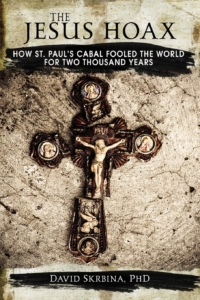
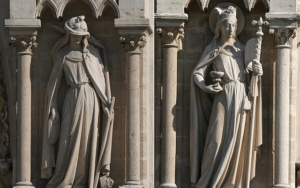
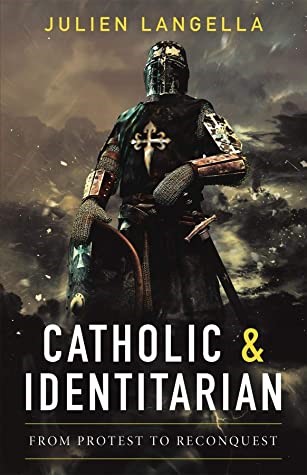
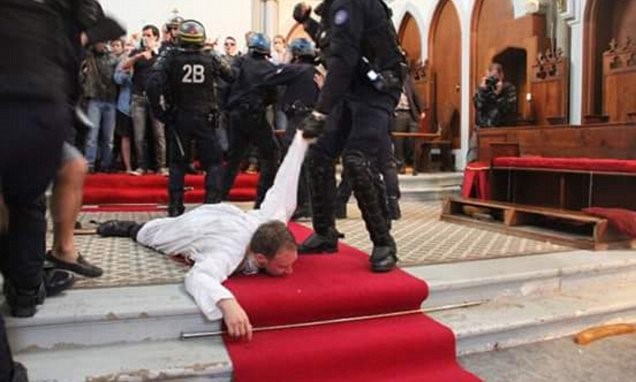

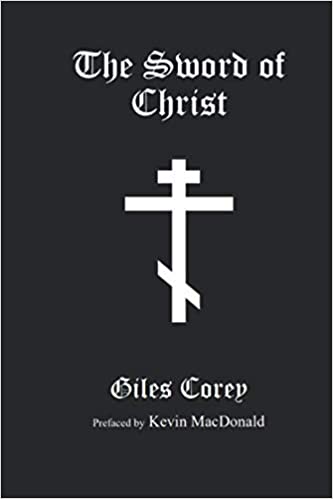
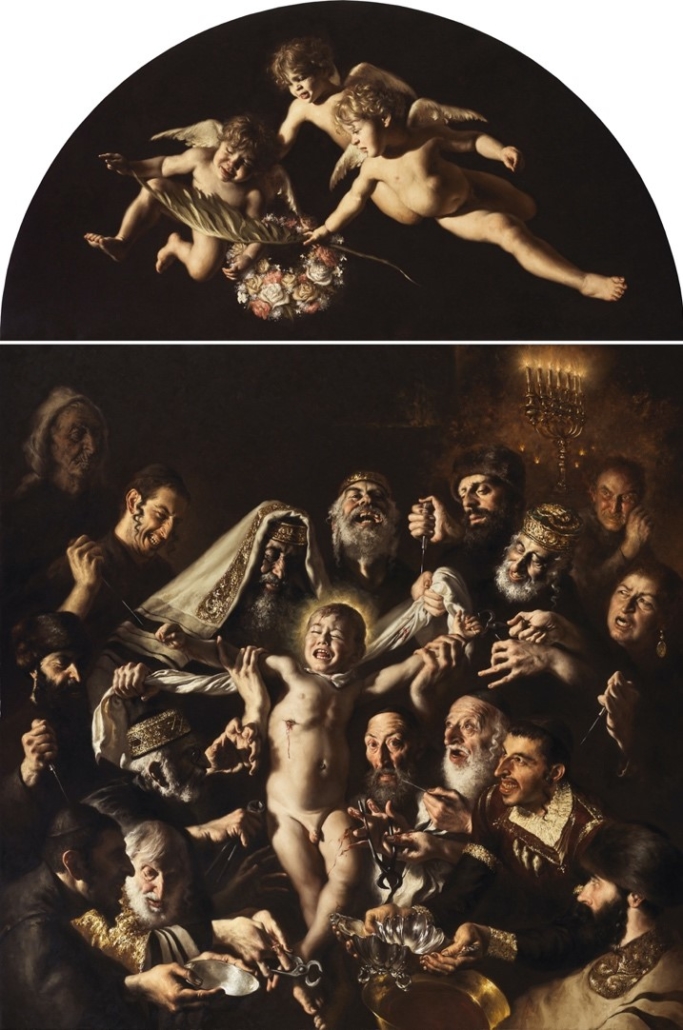
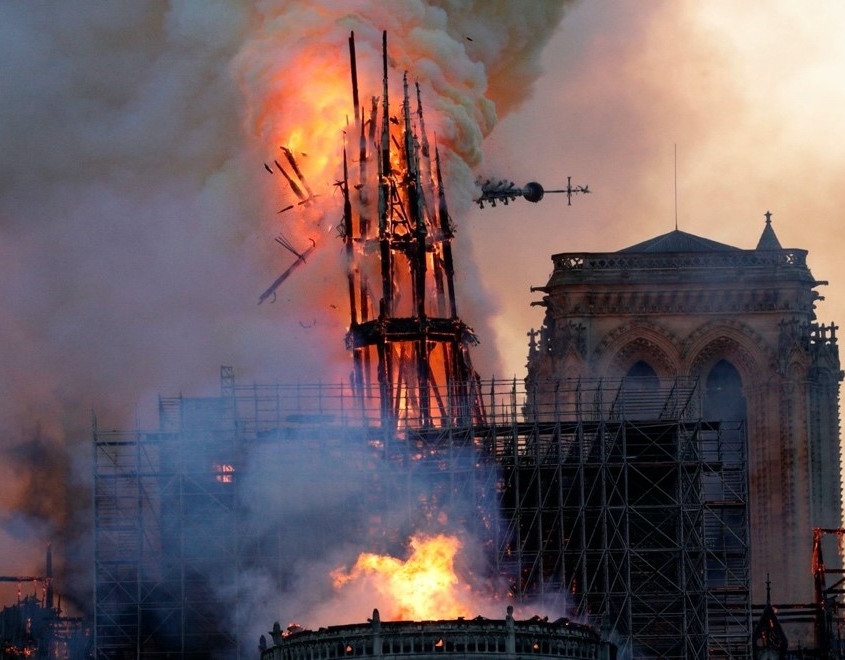
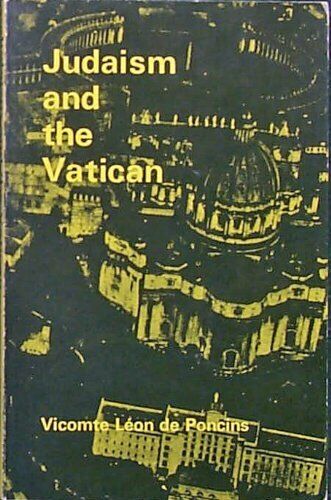 Review of
Review of 